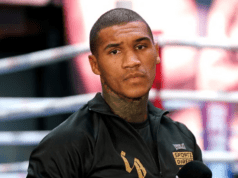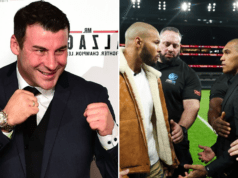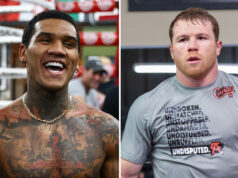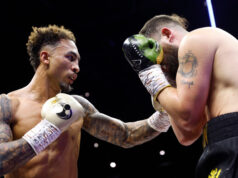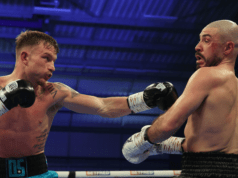Breaking Down Boxing Division by Division to See the Problems that Exist
As we move into the meaty part of 2012, it seems like the sport is stuck in quicksand. Nothing is really moving. Let’s take a look at some key divisions and chart the movement, or lack thereof, of some of the sport’s biggest stars. And let’s see if we can’t put our finger on exactly what the problem is.
Heavyweight:
There is nothing particularly new about the Klitschko domination of the division. What is surprising is that by 2012, nobody has stepped up to even become a reasonable threat. This is almost an unprecedented moment in heavyweight boxing history. Never before has there been such a long absence of a compelling threat to any heavyweight kingpin.
In February, an interesting heavyweight bout takes place, as cruiserweight titlist Marco Huck challenges WBA champion Alexander Povetkin. At the same time, the fight is merely for the honors of being, at best, the third-best heavyweight in the world, but at least it’s an interesting fight. For the Klitschko brothers. however, no such interest lies in any of their upcoming bouts. Wladimir next faces Jean-Marc Mormeck, with older brother Vitali in an only slightly more interesting match against Dereck Chisora.
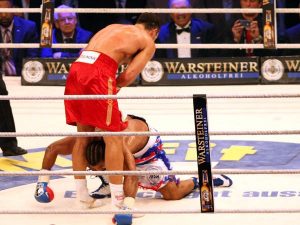
Last year, Wladimir dominated David Haye in the first heavyweight title bout to register a ripple in the states in ages. The bout was a stinker, with Haye failing to deliver on any of his bombastic per-fight talk. Now we’re stuck back in this routine of the brothers Klitschko playing out a string of mundane defenses with no build up or crescendo in sight.
This is no slight against the Klitschko brothers, but a condemnation on the rest of the division. Years into the Klitschko reign of dominance and still not one compelling contender? Nothing to look forward to? Nothing on the horizon? Whether boxing can thrive with a heavyweight division that is dead is open for debate. There is no argument, however, that having such a stalemate in boxing’s glamour division is not good for the sport.
Cruiserweight:
Not that boxing ever depended much on this division, but we can use help from wherever we can get it. This division is actually in one of its best periods. But with the balance of power squarely in Europe, don’t expect the cruiserweights to make much of a dent in the USA. Still, it’s nice to see such a long-maligned division get some run, even if it’s not here.
Light Heavyweight
An almost indecipherable situation. 47-year old Bernard Hopkins is still WBC champion after his truncated bout with Chad Dawson. That was 3 months ago and neither fighter has anything scheduled. Having a big-name champion reigning at an unprecedented age is compelling in nature, but the gridlock at the top of the weight class is not helping the sport. I suppose one can only complain so much when the two best guys just engaged in a bout, but the unsatisfactory outcome and lack of urgency to set the record straight isn’t helping.
There is a decent youth movement, with titlists Tavoris Cloud, Nathan Cleverly, and Beibut Shumenov waiting in the wings. Cloud looks like a real talent, but is idling away on the shelves. His first fight in 8 months takes place in February when he fights Gabriel Campillo. Cleverly, the best 175-pounder in Europe, is stuck making ho-hum defenses. And Shumenov, perhaps the most exciting member of the youth movement, has been inactive for 6 months and has nothing scheduled.
In summary, light heavyweight is a talented division. But with a dormant linear champion and a bunch of inactive titlists fighting in routine defenses, there is nothing moving. The best fights aren’t being made and a division that has potential is slipping into obscurity more and more with each passing month.
Super Middleweight
Over the past few years, this has been the hottest division in boxing, with the best fighting the best in the Super Six. Now that it’s over, this year might represent a hangover period. Word is that perhaps Carl Froch will fight a two-fight series with Lucian Bute. Not bad, but that might effectively prevent a fight between Bute and obvious #1-guy Andre Ward–the obvious top fight to be made in the weight class.
Middleweight
Not a good period in the division’s glorious history. Sanctioning body politics and horrific promotional practices have sullied what could be a decent weight class. Obvious top dog Sergio Martinez will be fighting talented Matthew Macklin in March. It’s difficult to take Martinez to task, as he is doing what he can with what’s available. It just seems that a handful of different fighters are trying to carve out their own niche in a division that begs to have one top dog.
Julio Cesar Chavez, Jr. will have a chance soon to advance the legitimacy of his cause, when he faces Marco Antonio Rubio. That’s a good start, but Chavez, like many of the other leading middleweights are in a strange holding pattern of aimlessness and gridlock. Fine rising fighters like Dmitry Pirog, Gennady Golovkin, and others are mired in a seemingly endless period of development, without it ever going anywhere.
Junior Middleweight
Stuck between divisions like super middleweight and welterweight, the 154-pound class continues to struggle. But with fighters like Miguel Cotto, Saul Alvarez and exciting sluggers like James Kirkland and Alfredo Angulo, there is some potential here. Just as the case with other divisions, however, the best fights never get made.
Kirkland-Angulo was an exception and produced unforgettable fireworks in their late-2011 bout, showing what can happen when promoters and managers eschew the self-preservation angle. And with Cotto and Alvarez the consensus #1 and #2 guys in the class, why has no one even clamored a fight between the two? Oh, how the standards have changed in this sport. In a division with fading interest, you have a bunch of different fighters attempting to create some heat and it just isn’t working.
Welterweight
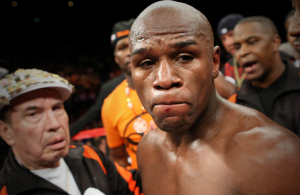
Here’s all you need to know: Floyd Mayweather has been at 147 for 6 years. Manny Pacquiao has been in this class for 3 years. They have been the number one and two fighters in the sport for a long time, in the same division, and the fight still hasn’t been made. And all the other fighters in the division suffer, with the 1-2 stalemate at the top. Not that there haven’t been good fights, but fans continued to be denied the one that matters.
We are getting into uncharted water on this one. In a suffering sport that can’t afford to be mired in these type of practices, Pacquiao-Mayweather is as overripe a Superfight as anyone can remember. The expected welterweight renaissance of a few years ago never came to pass. Most of the big-name fighters that littered the top ten 3-4 years ago are now gone or the luster is off. And the top two guys continue their stomach-churning PR battle. Disgusting. If this division was turned loose a few years ago and allowed to blossom, it could have buoyed the sport, much like Leonard, Hearns, Duran, and Benitez did 30 years ago. Nice job, asswipes.
Junior Welterweight
What a difference a year makes. This time in 2011, the division was in much better shape, with Tim Bradley and Devon Alexander about to fight in a tantalizing unification match and Amir Khan waiting in the wings. In addition, good fighters like Marcos Maidana, Robert Guerrero, and Zab Judah were making strides in this division, adding a little spice and depth to a exciting weight class.
Then Bradley-Alexander turned out to be a terrible stinker. Alexander’s luster continued to fade with an apparent robbery decision over Lucas Matthysse. Bradley went into a long inactive period, accompanied by the perception that he ducked Amir Khan in a proposed unification fight. Judah got stopped by Khan in an awful performance. Guerrero went back on the shelf. Khan ended up losing to Lamont Peterson in another weird decision in a top-level 140-pound fight. And before long, the division went cold. Such a shame. It could have been so much more.
Lightweight
The division isn’t all that bad. Sure, this isn’t the lightweight division of past periods. There have been great lightweight eras and this is not one of them. Antonio DeMarco and Jorge Linares engaged in a classic in 2011, Brandon Rios continued to punch his way to the top. And a group of young and promising contenders are making strides.
But the supreme champion at this weight, Juan Manuel Marquez, has not fought at this weight for 14 months and has nothing planned. And having a 38-year old champion who doesn’t seem eager to defend his laurels isn’t really helping anybody. Rios, the most exciting fighter in this division, is moving up to 140. So this will be a pivotal year for 135.
Junior Lightweight
Most of the belts are owned by foreign fighters, with Japanese Takashi Uchiyama and Takahiro Ao and Mexican Juan Carlos Salgado owning straps. Exciting American Adrien Broner made his mark in 2011 by snagging the vacant WBO belt and scoring some sizzling knockouts. Rising Americans Eloy Perez and Diego Magdaleno add some depth to a division that actually has some decent darkhorse appeal.
Featherweight
Another division of missed opportunities. The proposed superfight between Yuriorkis Gamboa and Juan Manuel Lopez now seems out of the cards, following Lopez’ crushing knockout loss to Orlando Salido and Gamboa’s seeming inability to make 126 anymore. Lopez will soon get a rematch with Salido, but Gamboa next faces Rocky Juarez, who is winless in his last 6 fights. Strange career development. What is everybody waiting for exactly?
Other good fighters are in this class, with Jhonny Gonzalez coming off a big year. Longtime standout Celestino Caballero snagged a 126-pound belt. And Chris John continues to reign. But unless the best fighters take on each other in meaningful bouts, what good is it?
Junior Featherweight
Not a bad division and one that could make some noise in the near future. Pound-for-pound entrant Nonito Donaire will presumably be making this division his home. With a young titlist in Rico Ramos, an apparent dynamo in Guillermo Rigondeaux, and exciting longtime beltholder Toshiaki Nishioka, a Japanese fighter who isn’t afraid to fight abroad, this division has some upside. It wouldn’t hurt, though, for Donaire to step up his ring activity or at least accelerate his career a bit. The Filipino Flash will fight Wilfredo Vazquez, Jr. in February.
Bantamweight
Like at super middleweight, the bantamweight division benefitted from a tournament, where the best fought the best. Problem was that Nonito Donaire didn’t participate, but his 2nd-round blitzing of Fernando Montiel in 2011 brought some needed exposure to 118. Abner Mares was finally able to notch a conclusive win in world-class waters by beating Joseph Agbeko. And Anselmo Moreno punched his ticket with an impressive win over Vic Darchinyan. Hopefully, last year’s tournament signaled a period in this division where the best continue to fight the best. If so, this could be one of the hotter divisions in the sport. It’s just a shame that Donaire moved up to the more-barren 122-pound weight class, taking away a lot of star appeal from 118.
Junior Bantamweight
A division with virtually zero U.S. appeal, with no American fighters at the top. However, 115 has been a division where some great fighters have participated. At this point, however, all the titlists are rather humdrum and this weight class will need a major infusion of interest to emerge on anyone’s radar in the West.
Flyweight
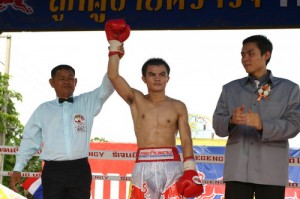
Unfortunately, the division has become very interesting, without much notice in the States. Brian Viloria capped an incredible comeback year of 2011 with a pulsating knockout win over Giovani Segura. Longtime champion and future Hall of Famer Pongsaklek Wonjongkam continued his incredible run with a big win over respected Edgar Sosa. And Hernan Marquez and Luis Concepcion engaged in a pair of sizzling title bouts. There is a lot to like at 112, but boxing fans have to do too much work to follow the action.
Junior Flyweight and Strawweight
Business as usual. A bunch of good, but unspectacular titleholders doing their thing. A few fighters who could help transcend these weight classes are 30-0 (25) Nicaraguan two-division titleholder Roman Gonzalez at 108 and young and exciting 105-pound titlist Kazuto Ioka.
Conclusion
When you go through all of the divisions, some common problems surface. Chief among the issues is that the best fighters are not fighting each other. The top fighters in each division operate independently of each other, as if they exist in a vacuum. Promoters are preserving their meal-tickets, with the fighters all too willing to go along for the ride.
And the sport suffers. Especially with MMA operating as a counter-piece, where the best fights usually get made and in timely fashion. It only brings the problem more to light. The big-name promoters and other shot-callers in the business seemingly have little interest to return the sport to its once-glorious standing. And it would be nice for the bigwigs whose grandiose lifestyles came from this sport to actually look after boxing a little bit.
It isn’t going to be doing any good for promoter’s legacies to leave the sport in shambles upon their exit from the business, especially considering that it was booming when they first entered the fray. When a sport goes from a mainstream attraction to a small niche sport on your dime, that doesn’t speak well of your contributions to this great sport. With many of these promoters aging, now is the time for them to do the right thing and feed the goose that has provided you with all your gold.
Memo to boxing’s shot-callers: There is not enough available glory within a weight class for 5 different guys to carve out meaningful careers while never crossing paths. It’s not 1954. People on the street can only name 2 active fighters. A major reason for that is this ridiculous matchmaking approach that allows fights to endlessly rot in the planning stages with little or no fruition for fans.
This philosophy runs counter to what would seem appropriate–a fan-friendly approach to making fights. Not a perpetual state of building interest without any payoff occurring. The sport is at one of its all-time lows in a span of over 100 years. So why in the world should this be happening? You’re gonna endlessly string along the fans that remain? How about cracking the whip, making the hottest fight now, and get things moving again?



